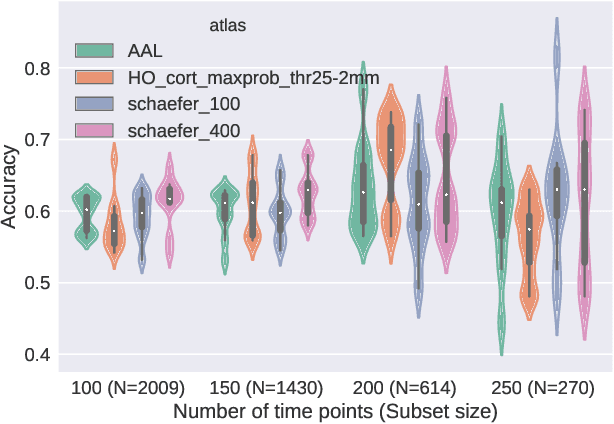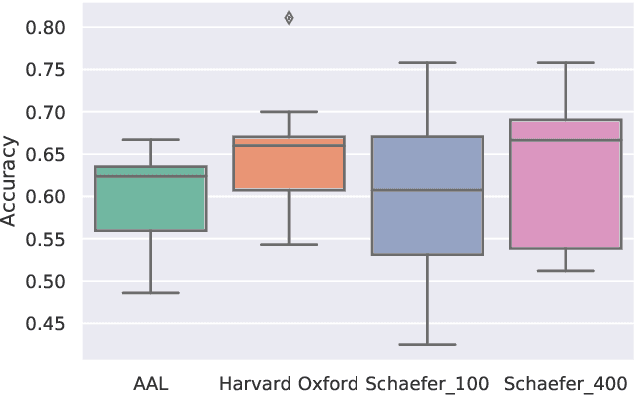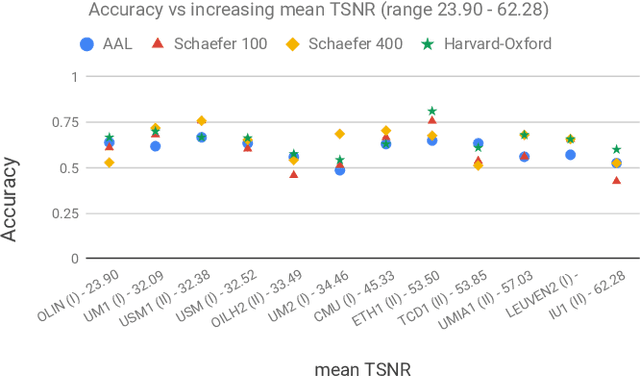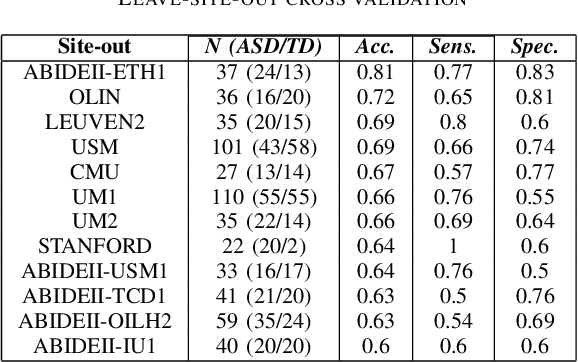Ahmed El Gazzar
Improving the Diagnosis of Psychiatric Disorders with Self-Supervised Graph State Space Models
Jun 07, 2022



Abstract:Single subject prediction of brain disorders from neuroimaging data has gained increasing attention in recent years. Yet, for some heterogeneous disorders such as major depression disorder (MDD) and autism spectrum disorder (ASD), the performance of prediction models on large-scale multi-site datasets remains poor. We present a two-stage framework to improve the diagnosis of heterogeneous psychiatric disorders from resting-state functional magnetic resonance imaging (rs-fMRI). First, we propose a self-supervised mask prediction task on data from healthy individuals that can exploit differences between healthy controls and patients in clinical datasets. Next, we train a supervised classifier on the learned discriminative representations. To model rs-fMRI data, we develop Graph-S4; an extension to the recently proposed state-space model S4 to graph settings where the underlying graph structure is not known in advance. We show that combining the framework and Graph-S4 can significantly improve the diagnostic performance of neuroimaging-based single subject prediction models of MDD and ASD on three open-source multi-center rs-fMRI clinical datasets.
Simple 1-D Convolutional Networks for Resting-State fMRI Based Classification in Autism
Jul 02, 2019



Abstract:Deep learning methods are increasingly being used with neuroimaging data like structural and function magnetic resonance imaging (MRI) to predict the diagnosis of neuropsychiatric and neurological disorders. For psychiatric disorders in particular, it is believed that one of the most promising modality is the resting-state functional MRI (rsfMRI), which captures the intrinsic connectivity between regions in the brain. Because rsfMRI data points are inherently high-dimensional (~1M), it is impossible to process the entire input in its raw form. In this paper, we propose a very simple transformation of the rsfMRI images that captures all of the temporal dynamics of the signal but sub-samples its spatial extent. As a result, we use a very simple 1-D convolutional network which is fast to train, requires minimal preprocessing and performs at par with the state-of-the-art on the classification of Autism spectrum disorders.
 Add to Chrome
Add to Chrome Add to Firefox
Add to Firefox Add to Edge
Add to Edge